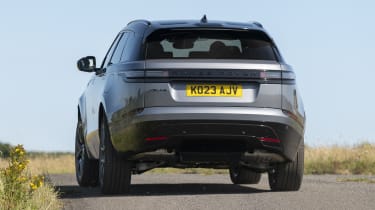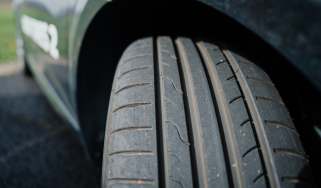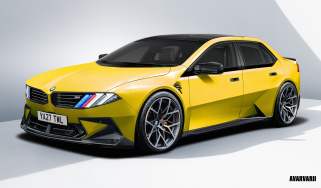Range Rover Velar review - Engines, performance and drive
Smooth and torquey, the D300 six-cylinder diesel engine is a perfect match for the Velar

The Velar features Active Road Noise Cancellation technology. Essentially, by producing frequencies from the speakers at an opposing amplitude to the tyre and road noise, the brand says it reduces road roar inside the cabin to class-leading levels. What we can say for sure is that the Velar is a relaxing place to be on a long drive.
The ride is impressively smooth at both low and high speeds, with very little in the way of vibration entering the cabin. There’s a good level of control that enables the Velar to feel stable and reassuring on a long-distance cruise, and prevent occupants from getting thrown from side to side when cornering, yet the compliant suspension is able to filter out the worst surfaces and harshest bumps of British roads.
But as well as being refined and comfortable, the Velar is also fairly good fun to drive for a car of this size, thanks to its meaty steering, balanced chassis and composure through the corners. And despite the all-weather tyres our test car was riding on, there’s plenty of grip available.
The ride is made even more comfortable if you opt for the smaller alloys, however the Velar looks fantastic on larger wheels, and we think some people will tolerate a small amount of discomfort in order to get that perfect look on the road and when parked up.
0-62mph acceleration and top speed
The Velar used to be offered with the same supercharged 5.0-litre V8 as the Jaguar F-Pace SVR, which could do 0-62mph in 4.5 seconds and hit 170mph flat out. That fire-breathing version of the Velar is no longer available though, meaning the quickest member of the lineup is now the P400e plug-in hybrid.
The P400e’s combination of a 2.0-litre four-cylinder petrol engine and electric motor produces a combined 398bhp and 640Nm; enough for 0-62mph in 5.4 seconds and a top speed of 130mph. When you’re driving in electric mode, the Velar PHEV feels like it’s struggling to shift itself along. Ask for some extra oomph by pushing the accelerator pedal harder, and the four-cylinder unit bursts into life and fires you towards the horizon at a rapid rate. Things actually become smoother when the four-pot petrol engine is doing all the work, but that defeats the point of having the hybrid in the first place.
Our preferred method of propulsion is the 296bhp D300 diesel, as the smooth and torquey six-cylinder is a perfect match for the Velar’s character. Admittedly, it’s not as quick as the plug-in hybrid, with 0-62mph in this version taking 6.5 seconds. Top speed goes up to 143mph for the D300, however.
Meanwhile the entry-level D200 diesel, which uses a 201bhp four-cylinder engine, takes 8.3 seconds to complete the same benchmark sprint, and also has a top speed of 130mph.
If you’re not a fan of diesels, the Velar is available with two petrol engines: the 247bhp P250 four-cylinder and the 394bhp P400 six-cylinder. The four-pot can propel the Velar to 62mph in 7.5 seconds and up to 135mph, while the P400 requires just 5.5 seconds to reach 62mph before topping out at 155mph.






